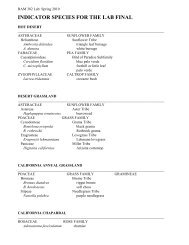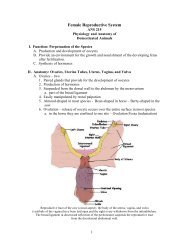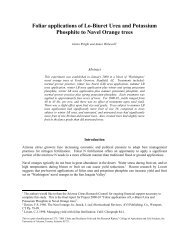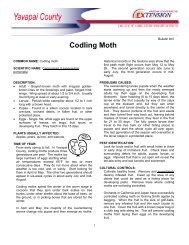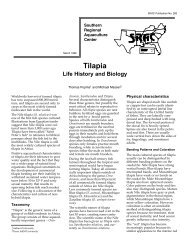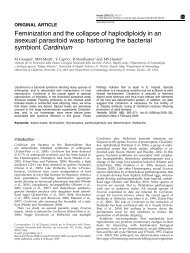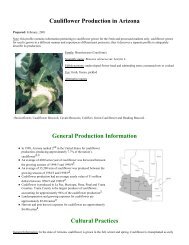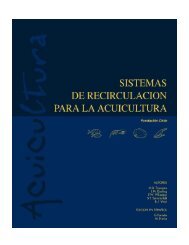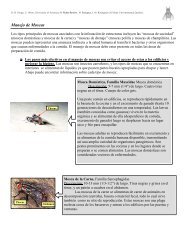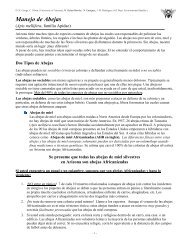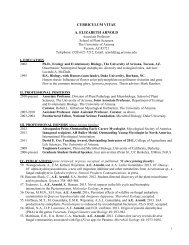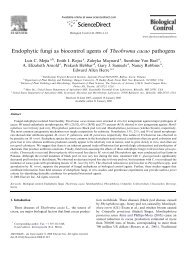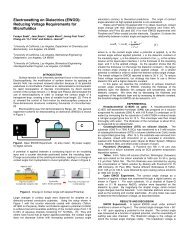Phytophthora Disease Management in Citrus - 6 slides per page
Phytophthora Disease Management in Citrus - 6 slides per page
Phytophthora Disease Management in Citrus - 6 slides per page
You also want an ePaper? Increase the reach of your titles
YUMPU automatically turns print PDFs into web optimized ePapers that Google loves.
<strong>Phytophthora</strong> <strong>Phytophthora</strong> <strong>Disease</strong><br />
<strong>Management</strong> <strong>in</strong> <strong>Citrus</strong><br />
Peggy A. Mauk<br />
County Director/Subtropical<br />
Horticulture Advisor<br />
<strong>Phytophthora</strong> Root Rot<br />
<strong>Citrus</strong> <strong>Disease</strong>s<br />
<strong>Phytophthora</strong> <strong>Phytophthora</strong> Root Rot<br />
<strong>Phytophthora</strong> <strong>Phytophthora</strong> Gummosis<br />
<strong>Phytophthora</strong> <strong>Phytophthora</strong> Root Rot<br />
<strong>Phytophthora</strong> <strong>Phytophthora</strong> Gummosis<br />
New or ongo<strong>in</strong>g concerns<br />
Hendersonula Hendersonula Dieback<br />
Coniophora Coniophora wood decay<br />
Susceptible Rootstock<br />
<strong>Phytophthora</strong> <strong>Phytophthora</strong> spp.<br />
<strong>Phytophthora</strong> <strong>Phytophthora</strong> Gummosis Causal Organisms<br />
<strong>Phytophthora</strong> <strong>Phytophthora</strong> parasitica parasitica<br />
Warm season pathogen: active May –<br />
November<br />
Causes gummosis and root rot<br />
<strong>Phytophthora</strong> <strong>Phytophthora</strong> citrophthora<br />
citrophthora<br />
Cool season pathogen: active November –<br />
March<br />
Causes gummosis, root rot and fruit rot
Root rot symptoms<br />
The disease destroys the feeder roots of<br />
susceptible rootstocks.<br />
The fungus <strong>in</strong>fects the root cortex, which turns<br />
soft and separates from the stele.<br />
Water uptake of water and nutrients will be<br />
(severely) limited.<br />
Tree will grow poorly, stored energy reserves<br />
will be depleted, and production will decl<strong>in</strong>e.<br />
Rootstock selection<br />
Irrigation practices<br />
Fungicides<br />
<strong>Management</strong><br />
What lemon rootstock should I use?<br />
If there is a history of root rot –<br />
Macrophylla<br />
If soils are heavy – Macrophylla<br />
General Symptoms<br />
Slow decl<strong>in</strong>e<br />
Foliage light green<br />
Leaves cup toward each other as <strong>in</strong> water stress<br />
Little leaf syndrome with severe z<strong>in</strong>c deficiency<br />
Canopy th<strong>in</strong>n<strong>in</strong>g – leaf loss<br />
Sap ooz<strong>in</strong>g from the lower trunk (gummosis)<br />
Dieback<br />
Death<br />
Rootstock<br />
Lemon<br />
Macrophylla<br />
Volkameriana<br />
Others<br />
C-35 35<br />
Carrizo<br />
Sour orange<br />
Trifoliate orange<br />
Rootstock selection<br />
Gummosis<br />
Tolerant<br />
Susceptible<br />
Tolerant<br />
Intermediate<br />
Tolerant<br />
Tolerant<br />
Root rot<br />
Tolerant<br />
Susceptible<br />
Tolerant<br />
Tolerant<br />
Intermediate<br />
Tolerant<br />
Irrigation <strong>Management</strong><br />
Nematode<br />
Susceptible<br />
? Susceptible<br />
Tolerant<br />
Tolerant<br />
Susceptible<br />
Tolerant<br />
Gummosis<br />
Irrigate away from the tree trunk so that<br />
the tree scion stays dry<br />
Root Rot<br />
Apply water evenly:<br />
Excessive water helps the fungus<br />
Excessive dry causes roots to crack
Other management strategies for<br />
replant situations<br />
Sample for <strong>Phytophthora</strong> <strong>Phytophthora</strong> and <strong>Citrus</strong><br />
nematode ( (Tylenchulus<br />
Tylenchulus))<br />
History of root rot – fumigate<br />
Uncerta<strong>in</strong> if there was a history of root rot<br />
– preventive fungicides<br />
Aliette<br />
Ridomil<br />
Summary<br />
<strong>Phytophthora</strong> <strong>Phytophthora</strong> spp. are common <strong>in</strong><br />
California and it is the number one disease<br />
of citrus<br />
These diseases is controllable especially<br />
with appropriate rootstock selection and<br />
water management practices<br />
<strong>Management</strong> of Gummosis<br />
Change emitters if they are caus<strong>in</strong>g the<br />
water to come <strong>in</strong> contact with the trunk<br />
Treat lesions with a fungicide when<br />
gumm<strong>in</strong>g is active, 2 times/year for 1 to 2<br />
years<br />
If the lesion covers more than 50% of the<br />
tree, consider replac<strong>in</strong>g the tree<br />
Useful Web Sites<br />
UC Pest <strong>Management</strong> Guidel<strong>in</strong>es<br />
http://www.ipm.ucdavis.edu<br />
Newsletters and publications:<br />
http://ceriverside.ucdavis.edu/<br />
UC Entomology Biocontrol: Biocontrol:<br />
http://www.biocontrol.ucr.edu<br />
UC Fruit & Nut Center:<br />
http://fruitsandnuts.ucdavis.edu<br />
http:// fruitsandnuts.ucdavis.edu



